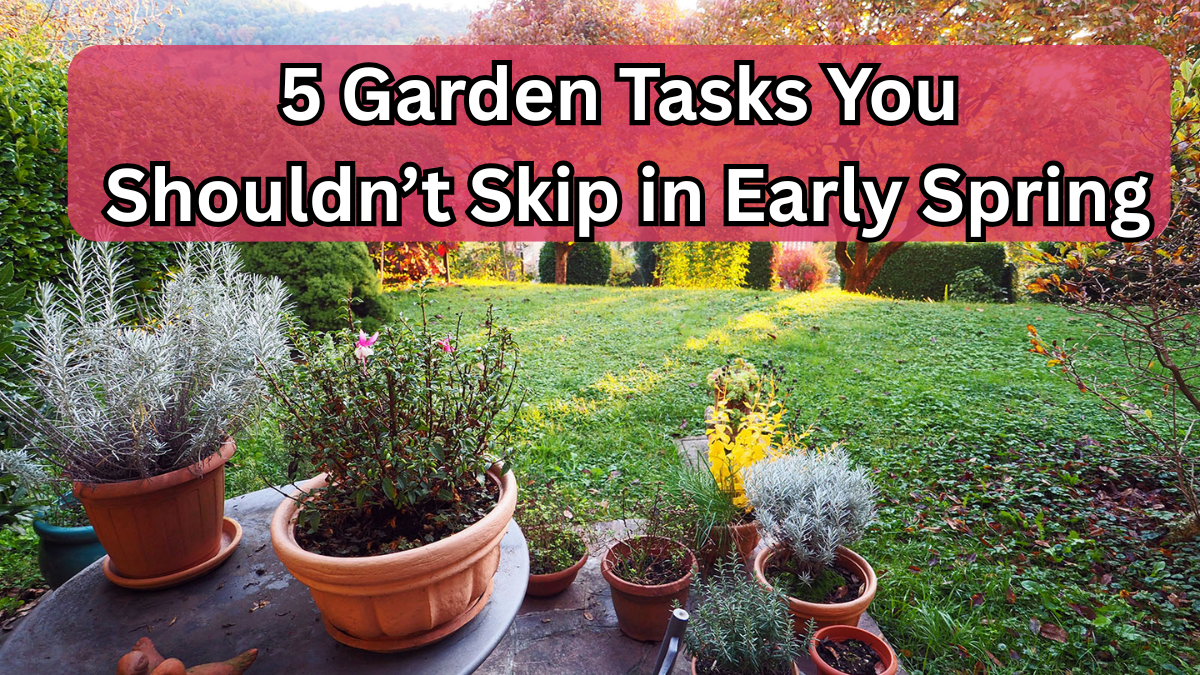Spring is the perfect season to breathe new life into your garden. Early spring is when your plants wake up from winter dormancy, and your garden needs a little extra care to thrive. Skipping essential spring garden tasks now can make the rest of the season more challenging. Here’s your guide to the must-do spring garden tasks for a flourishing garden.

1. Clean Up Your Garden Beds
After winter, your garden beds may be filled with dead leaves, old mulch, and debris. A thorough cleanup ensures plants have room to grow and reduces the risk of pests and diseases.
Key steps:
-
Remove fallen leaves, broken branches, and dead plants
-
Pull out weeds before they take root
-
Add a fresh layer of compost or mulch to nourish your soil
Benefits:
-
Encourages healthy growth
-
Improves soil aeration
-
Prevents fungal and insect infestations
2. Prune Trees and Shrubs
Early spring is the ideal time to prune most trees and shrubs before they leaf out fully. Pruning helps maintain shape, removes damaged branches, and promotes vigorous growth.
Pruning tips:
-
Cut back dead or crossing branches
-
Use clean, sharp tools to avoid damaging plants
-
Avoid heavy pruning on plants that bloom early in spring; wait until after flowering
3. Prepare Your Soil
Soil preparation is the foundation of a successful garden. Early spring is the time to ensure your soil is nutrient-rich and ready for planting.
Soil prep checklist:
-
Test soil pH and adjust if necessary
-
Add compost or organic matter for better fertility
-
Loosen compacted soil to improve drainage and root growth
Gardening Tip: Healthy soil now saves you headaches later in the season.
4. Start Seeds Indoors or Directly in the Garden
Early spring is perfect for starting vegetables, herbs, and flowers. Decide which plants need a head start indoors and which can go straight into your garden.
Planting guide:
| Plant Type | Indoor Start | Direct Planting |
|---|---|---|
| Tomatoes | Yes | No |
| Lettuce | Optional | Yes |
| Peppers | Yes | No |
| Radishes | No | Yes |
| Marigolds | Yes | Optional |
Benefits:
-
Gives tender plants a stronger start
-
Extends your growing season
-
Reduces the risk of frost damage
5. Plan Your Early Spring Garden Layout
Planning your garden layout early ensures you make the most of space, sunlight, and companion planting opportunities.
Spring checklist for layout planning:
-
Rotate crops to prevent soil depletion
-
Consider spacing and growth habits
-
Plan for succession planting to enjoy harvests longer
Gardening Tip: A well-thought-out garden layout now means less work and more beauty later.
Why These Spring Garden Tasks Matter
Completing these early-season prep tasks ensures your garden:
-
Thrives throughout the spring and summer
-
Reduces pests and diseases naturally
-
Saves time and effort later in the season
Focusing on spring garden tasks early sets your garden up for a successful year. Even small efforts now will pay off with abundant blooms and bountiful harvests.
FAQs
Q1: Can I prune all shrubs in early spring?
A: Most shrubs benefit from early spring pruning, but avoid pruning early-blooming shrubs until after they flower to preserve blooms.
Q2: How do I know when soil is ready for planting?
A: Soil should be moist but not soggy. A simple squeeze test works—if it crumbles easily, it’s ready.
Q3: Should I start all vegetables indoors?
A: Not all. Tender plants like tomatoes and peppers do best indoors, while hardy crops like lettuce and radishes can be direct-seeded outdoors.
Q4: How often should I mulch my garden beds?
A: Apply mulch once in early spring and top up as needed to maintain a 2–3 inch layer for moisture retention and weed control.
Click here to learn more